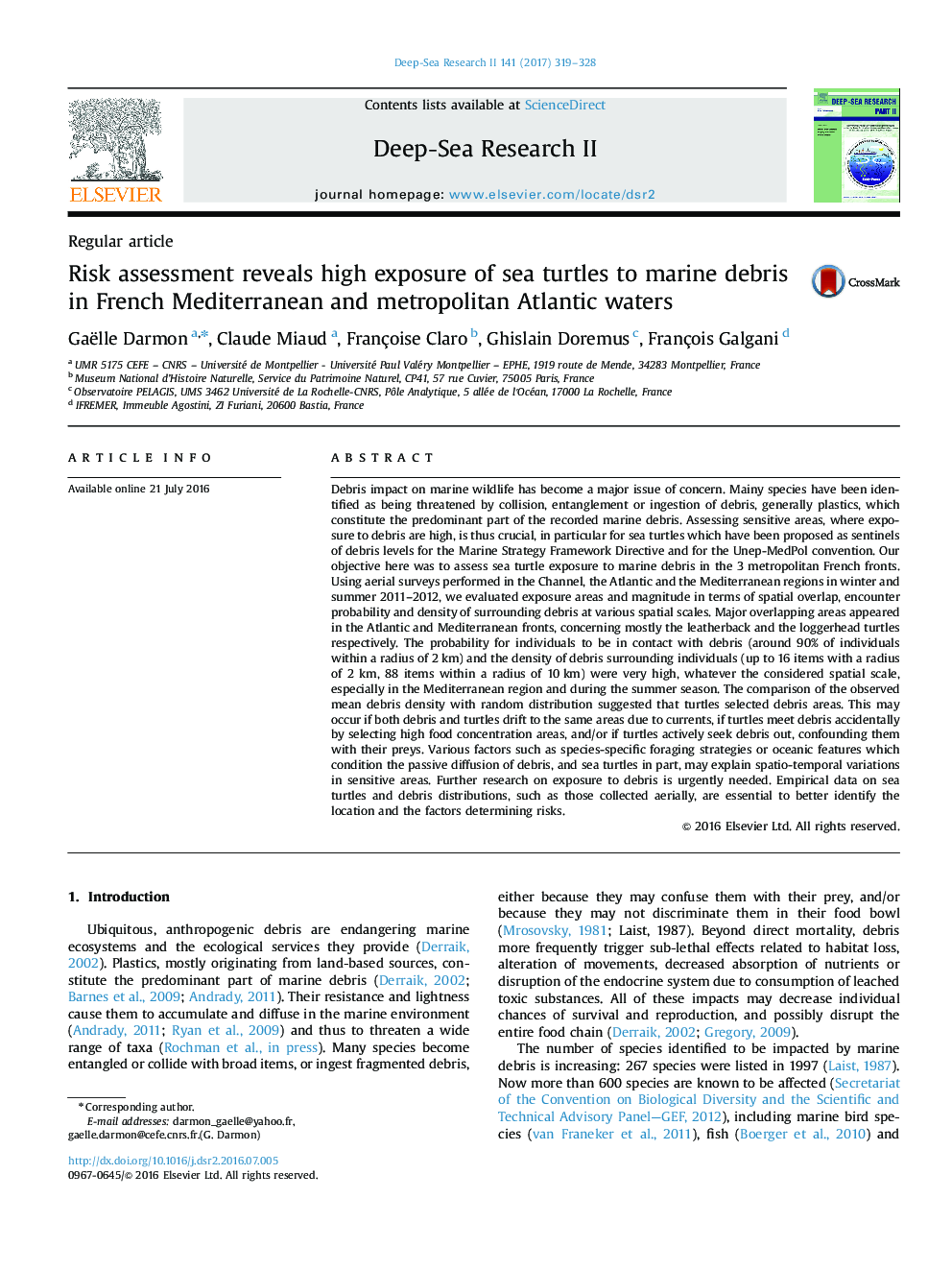| کد مقاله | کد نشریه | سال انتشار | مقاله انگلیسی | نسخه تمام متن |
|---|---|---|---|---|
| 5764942 | 1626401 | 2017 | 10 صفحه PDF | دانلود رایگان |
Debris impact on marine wildlife has become a major issue of concern. Mainy species have been identified as being threatened by collision, entanglement or ingestion of debris, generally plastics, which constitute the predominant part of the recorded marine debris. Assessing sensitive areas, where exposure to debris are high, is thus crucial, in particular for sea turtles which have been proposed as sentinels of debris levels for the Marine Strategy Framework Directive and for the Unep-MedPol convention. Our objective here was to assess sea turtle exposure to marine debris in the 3 metropolitan French fronts. Using aerial surveys performed in the Channel, the Atlantic and the Mediterranean regions in winter and summer 2011-2012, we evaluated exposure areas and magnitude in terms of spatial overlap, encounter probability and density of surrounding debris at various spatial scales. Major overlapping areas appeared in the Atlantic and Mediterranean fronts, concerning mostly the leatherback and the loggerhead turtles respectively. The probability for individuals to be in contact with debris (around 90% of individuals within a radius of 2Â km) and the density of debris surrounding individuals (up to 16 items with a radius of 2 km, 88 items within a radius of 10Â km) were very high, whatever the considered spatial scale, especially in the Mediterranean region and during the summer season. The comparison of the observed mean debris density with random distribution suggested that turtles selected debris areas. This may occur if both debris and turtles drift to the same areas due to currents, if turtles meet debris accidentally by selecting high food concentration areas, and/or if turtles actively seek debris out, confounding them with their preys. Various factors such as species-specific foraging strategies or oceanic features which condition the passive diffusion of debris, and sea turtles in part, may explain spatio-temporal variations in sensitive areas. Further research on exposure to debris is urgently needed. Empirical data on sea turtles and debris distributions, such as those collected aerially, are essential to better identify the location and the factors determining risks.
Journal: Deep Sea Research Part II: Topical Studies in Oceanography - Volume 141, July 2017, Pages 319-328
